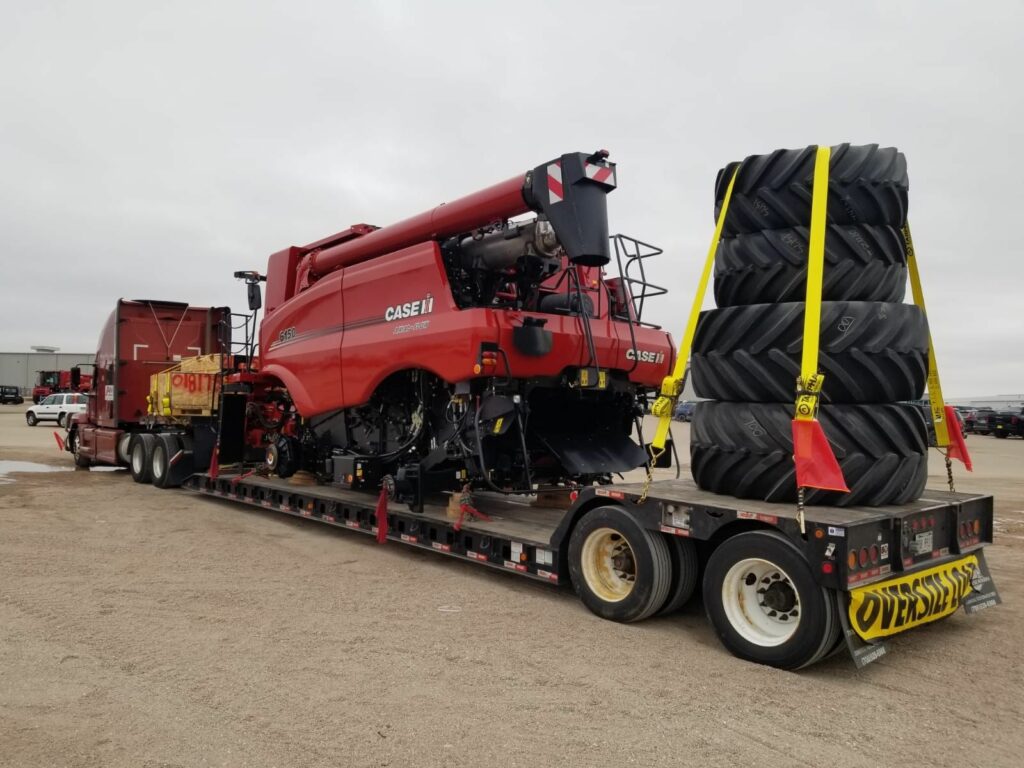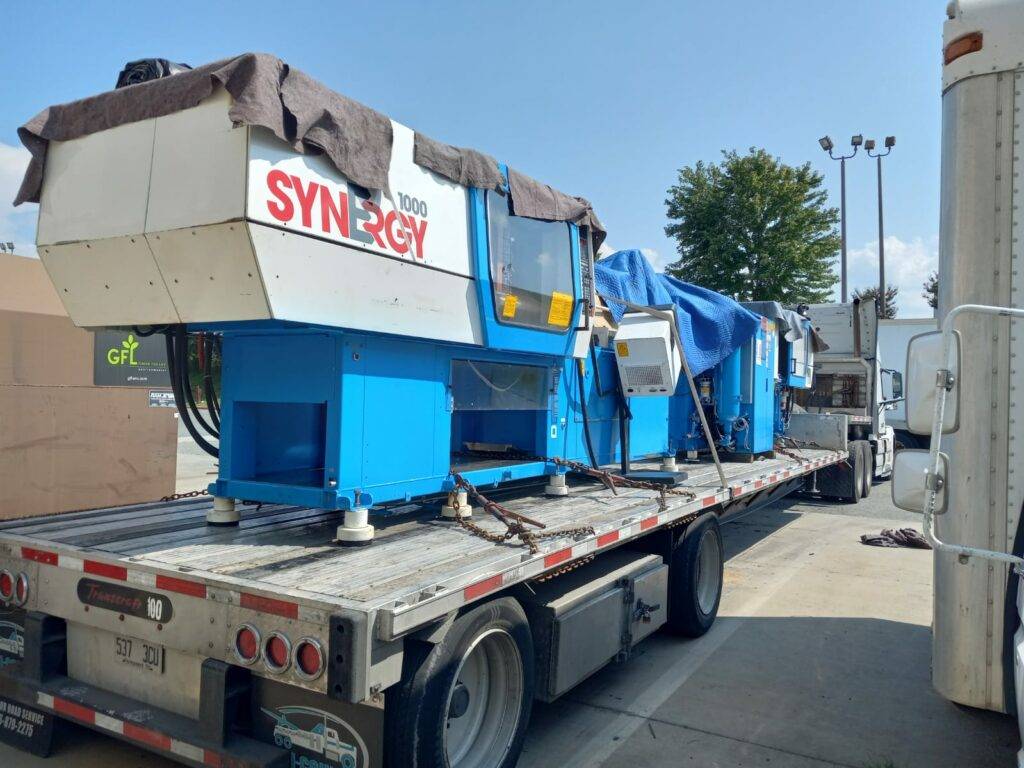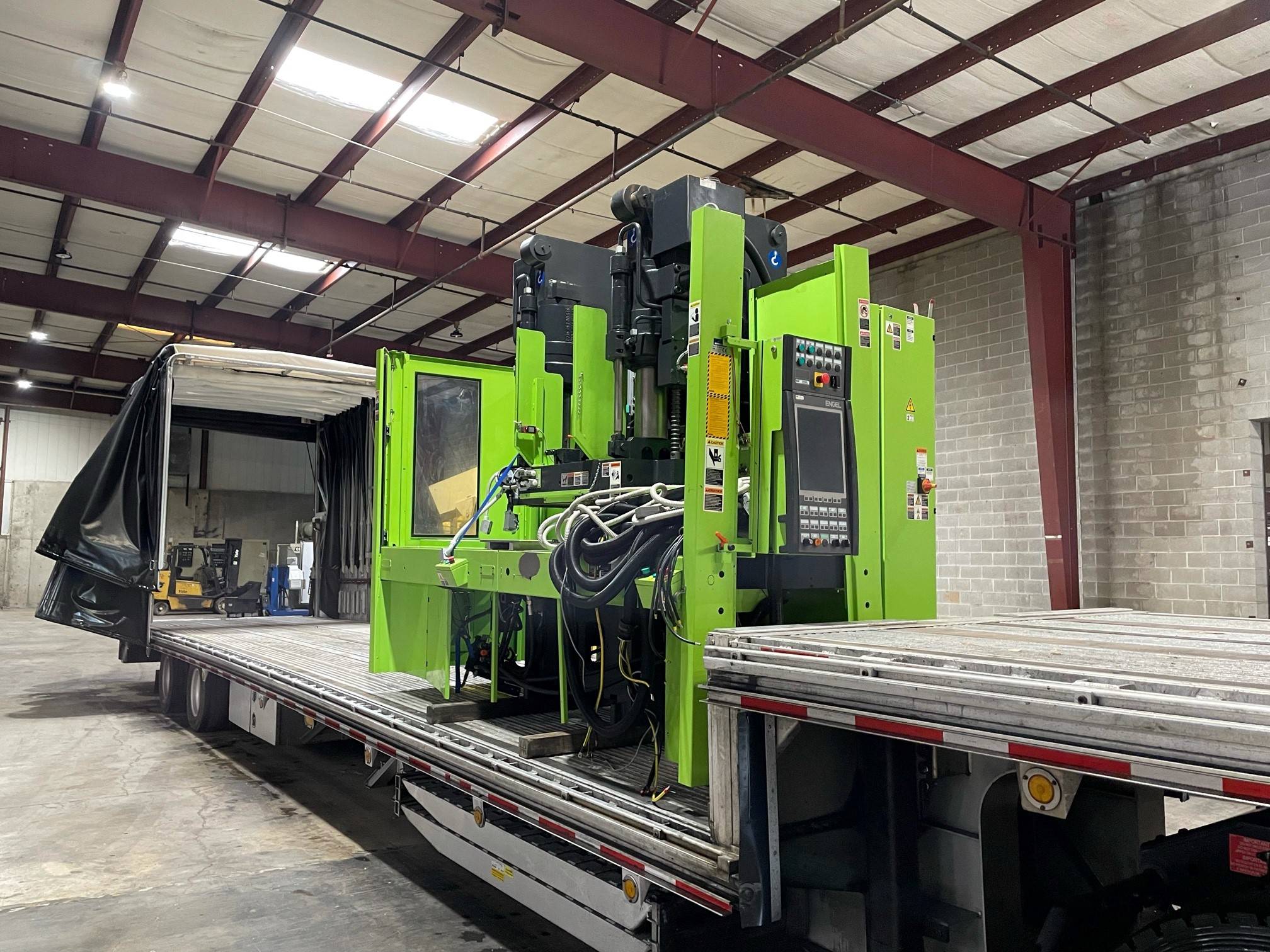Introduction
When it comes to hauling oversized equipment or machinery, choosing the right trailer can make all the difference. The debate of step deck vs lowboy is crucial for anyone in the transportation and logistics industry. Understanding the nuances between these two trailer types can save you time, money, and a lot of headaches on the road.
Moreover, selecting the appropriate trailer ensures compliance with transportation regulations, prevents damage to your cargo, and optimizes the efficiency of your operations. In this article, we’ll delve into the specifics of step deck and lowboy trailers, explore their key differences, and help you determine which one is right for your hauling needs.
Step Deck Trailers
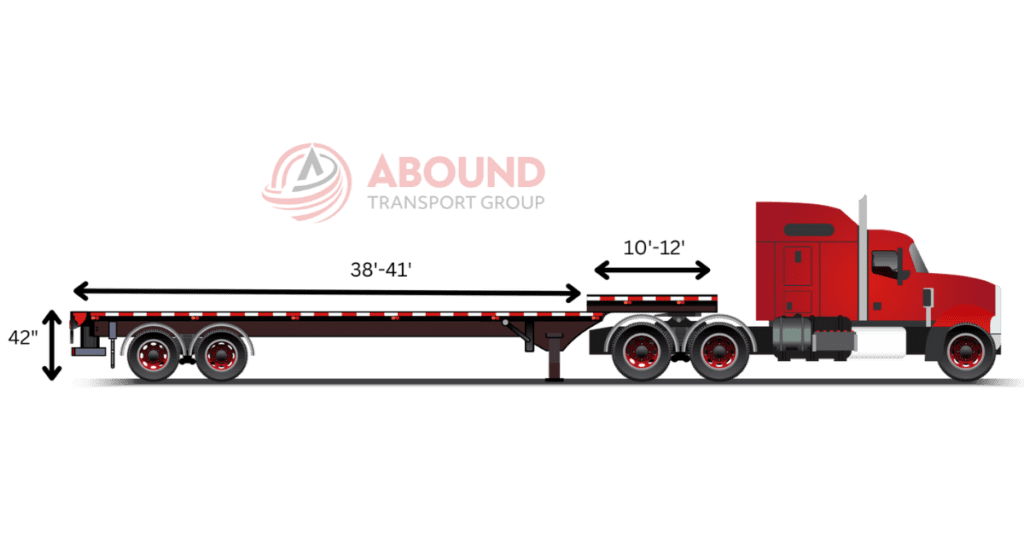
Step deck trailers, also known as drop deck trailers, are a staple in the hauling industry. They are designed with a lower deck that drops down after clearing the tractor unit, allowing for taller loads without exceeding height restrictions. The upper deck, located above the tractor unit’s wheels, is typically shorter but useful for additional cargo space.
These trailers offer versatility for transporting a variety of freight, from machinery to building materials. With a maximum legal freight height of up to 10 feet on the lower deck, they are ideal for loads that are too tall for a standard flatbed but don’t require the ultra-low deck of a lowboy.
Features of Step Deck Trailers:
- Deck Height: The lower deck sits approximately 3 feet 6 inches off the ground, providing additional height clearance compared to flatbed trailers.
- Load Capacity: Typically handles cargo up to 48,000 pounds, making them suitable for a wide range of equipment and materials.
- Length: The combined length of the upper and lower decks can be up to 53 feet, allowing ample space for large items.
- Accessibility: The open design makes it easy to load and unload cargo from the sides or from above with cranes, if necessary.
Advantages of Using Step Deck Trailers:
- Versatility: Perfect for hauling various types of freight that exceed flatbed height restrictions.
- Safety: Lower deck height reduces the center of gravity, enhancing stability during transport.
- Cost-Effective: Often more economical than lowboys for loads within their capacity, saving on permit fees and specialized equipment.
Lowboy Trailers
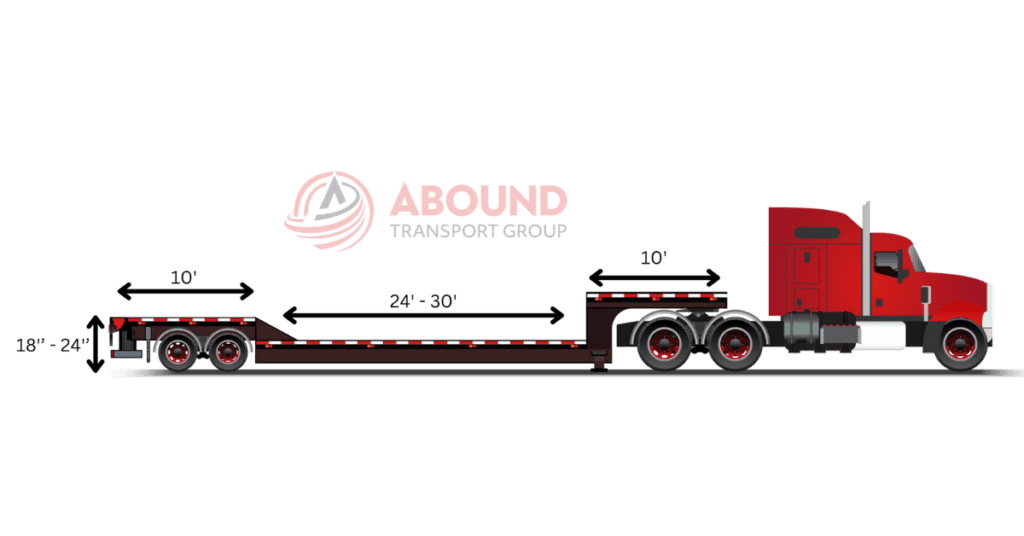
Lowboy trailers are the go-to choice for hauling extremely heavy and oversized loads. With a deck that sits just a few inches off the ground—typically between 18 to 24 inches—they enable transport of tall equipment without breaching height limitations. This ultra-low deck height is perfect for moving large machinery, such as cranes, bulldozers, and other heavy construction equipment.
Features of Lowboy Trailers:
- Deck Height: The lowest in the industry, allowing for loads up to 12 feet in height while remaining within legal limits.
- Load Capacity: Capable of carrying up to 80,000 pounds or more, depending on the number of axles and state regulations.
- Length: The well (the main deck) is typically between 24 to 29 feet long, suitable for large equipment.
- Removable Gooseneck: Many lowboys feature a detachable gooseneck, enabling equipment to be driven directly onto the trailer from the front.
Advantages of Using Lowboy Trailers:
- Heavy-Duty Hauling: Designed to handle the heaviest and tallest equipment that other trailers can’t accommodate.
- Accessibility: The removable gooseneck simplifies loading and unloading of oversized machinery, especially when the equipment is inoperable.
- Regulation Compliance: Allows transport of oversized loads without excessively violating height restrictions, minimizing the need for special permits.
Step Deck vs Lowboy: Key Differences
The primary differences between step deck and lowboy trailers lie in their design, deck height, load capacity, and intended use. Understanding these differences is crucial when deciding which trailer suits your specific hauling needs.
1. Design and Structure
Step Deck Trailers: Feature two decks—a higher upper deck and a lower deck that drops down after clearing the tractor unit. The step design allows for taller loads than flatbeds but maintains a higher deck height than lowboys.
Lowboy Trailers: Designed with an ultra-low deck that is close to the ground. The gooseneck can be detached, allowing for front loading of heavy equipment.
2. Deck Height and Load Height Capacity
Step Deck Trailers: Lower deck height is about 3 feet 6 inches, allowing for cargo up to 10 feet in height without requiring over-height permits.
Lowboy Trailers: With a deck height between 18 to 24 inches, they can carry loads up to 12 feet tall while staying within legal height limits.
3. Load Capacity and Weight Limits
Step Deck Trailers: Typically handle loads up to 48,000 pounds. They are suitable for medium-weight equipment and materials.
Lowboy Trailers: Built to carry heavy loads, often up to 80,000 pounds or more, depending on the configuration. They are ideal for very heavy machinery and equipment.
4. Accessibility and Loading Mechanisms
Step Deck Trailers: Cargo is usually loaded from the rear or sides and may require ramps or cranes for heavy equipment.
Lowboy Trailers: The detachable gooseneck allows for equipment to be driven directly onto the trailer. This is particularly useful for inoperable or oversized vehicles.
5. Regulatory Considerations
Step Deck Trailers: May require permits for loads that exceed standard width or weight limits but are generally more straightforward regarding height restrictions.
Lowboy Trailers: Often used for oversize and overweight loads, which typically require special permits, route planning, and may be subject to additional regulations.
Use Cases
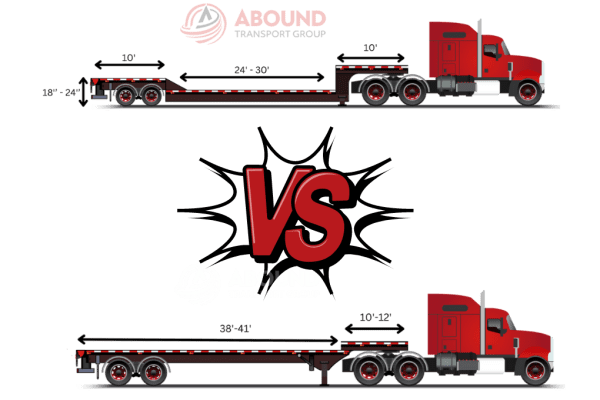
Choosing between a step deck and a lowboy trailer often comes down to the specific hauling needs of your business. Below are examples of scenarios where each trailer type excels.
When to Use a Step Deck Trailer:
- Agricultural Equipment: Transporting tractors, harvesters, and other farming machinery that are too tall for a flatbed but not excessively heavy.
- Construction Materials: Hauling oversized building materials like steel beams, lumber, or prefabricated structures that exceed flatbed height limits.
- Vehicles: Moving tall vehicles such as buses, RVs, or large vans that require additional height clearance but are within weight limits.
- Industrial Machines: Shipping equipment like CNC machinery or generators that are tall but not exceptionally heavy.
- Ease of Loading: When side loading is necessary, such as with forklifts or cranes, due to the design or dimensions of the cargo.
When to Use a Lowboy Trailer:
- Heavy Construction Equipment: Transporting excavators, bulldozers, cranes, and other heavy machinery that are both heavy and tall.
- Oversized Loads: Moving industrial equipment that exceeds standard height and weight limits, necessitating a lower deck height and higher weight capacity.
- Inoperable Vehicles: Hauling heavy machinery that cannot be driven onto a trailer without a detachable gooseneck, simplifying the loading process.
- Specialized Freight: Shipping items like transformers, large capacity tanks, or other massive industrial components.
- Regulatory Compliance: When transporting loads that would be over-height on any other trailer, thus requiring a lowboy to meet legal height restrictions.
Conclusion
Choosing the right trailer is essential for safe and efficient transportation. Understanding the differences between step deck and lowboy trailers ensures that your hauling needs are met without unnecessary complications. Whether you’re moving tall machinery or extremely heavy equipment, selecting the appropriate trailer type will facilitate a smooth shipping process.
Both step deck and lowboy trailers have their unique advantages. Step decks offer versatility and cost-effectiveness for loads that are taller than standard but not excessively heavy. Lowboys, on the other hand, are indispensable for heavy-duty hauling of oversized and overweight equipment.
Making an informed decision between a step deck vs lowboy trailer can significantly impact your project’s timelines and costs. Consider factors such as the dimensions and weight of your cargo, loading requirements, and regulatory considerations.
Ready to Choose the Right Trailer for Your Hauling Needs?
When it comes to transporting oversized or heavy freight, partnering with a reliable logistics provider is crucial. Abound Transport Group offers expert guidance and customized solutions to match your specific requirements. With a vast network of vetted carriers and advanced technology for real-time tracking, they ensure your shipments are handled with care and efficiency.
Whether you need a step deck for taller loads or a lowboy for heavy machinery, Abound Transport Group has the expertise to make your shipping process seamless. Their dedicated customer service team works with you from quote to delivery, providing personalized support every step of the way.
Don’t leave your valuable freight to chance. Contact Abound Transport Group today and find the perfect trailer solution for your hauling needs.
